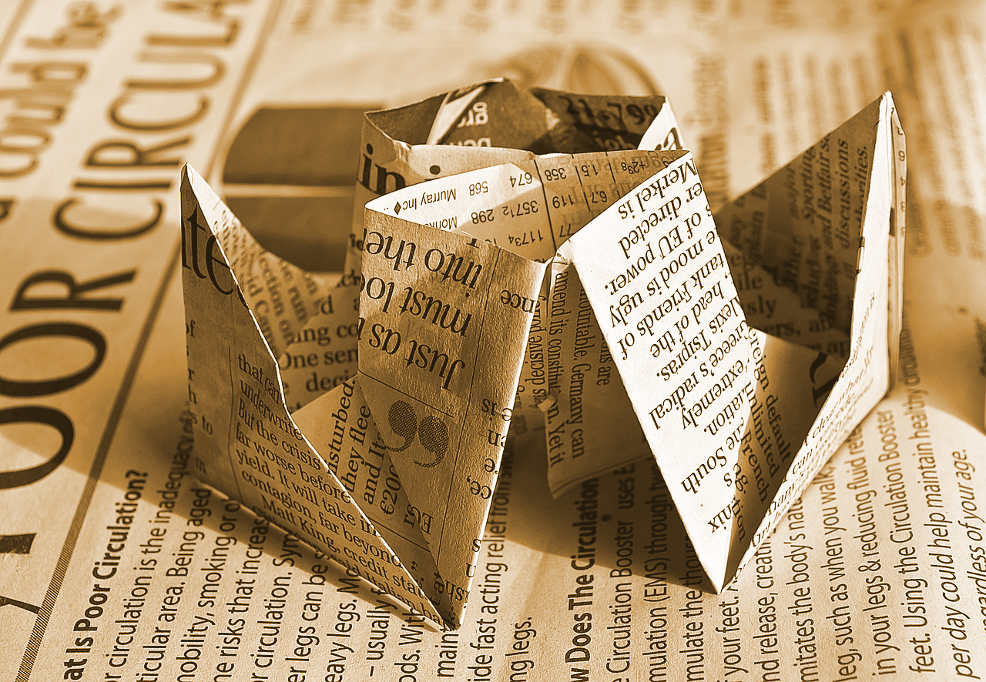Textgestaltung im Web – so bringen Sie Worte in Form!
Wer Webtexte produzieren will, muss wissen: Das Leseverhalten im Internet unterscheidet sich grundlegend im Vergleich zu Printmedien. Es wird nicht Wort für Wort gelesen – es wird in erster Linie gescannt. Ein Webtext muss dementsprechend aufgearbeitet und präsentiert werden. Mit der richtigen Textgestaltung können Sie die „Scanner“ festhalten. Grafisches Schreiben und die umgekehrte Pyramide spielen dabei eine wesentlich Rolle. Erfahren Sie hier was es damit auf sich hat!
Nicht selten verbringen wir Stunden damit, den perfekten Artikel zu entwerfen. Informationen werden gründlich recherchiert, Worte mit kreativer Sorgfalt gewählt und Texte am Ende penibel auf Fehler hin überprüft. Unique Content eben – und das ist auch gut so! Nur ist es mit dem Schreiben des Textes allein nicht getan. Sie müssen die Menschen auch dazu bringen ihn zu lesen. Denn was nützen brillante Worte, wenn sie keine Beachtung finden?
Fakt ist: Sie haben nur wenige Sekunden, um die Nutzer von Ihren Inhalten zu überzeugen. In dieser Zeit wird nicht gelesen, es wird abgecheckt. Der erste Eindruck muss also sitzen.

Vom Leseverhalten im Netz – Scannen statt Lesen
Im Internet wollen die Menschen schnelle Informationen. Daher wird ein Text nicht gelesen – er wird gescannt:
- Die Zeilen werden nicht horizontal von links nach rechts gelesen – sie werden von oben nach unten überflogen.
- In nur durchschnittlich maximal 10 Sekunden entscheidet der Nutzer, ob die Inhalte seinen Zweck erfüllen oder nicht.
- Der linken Hälfte einer Webseite wird mehr als doppelt so viel Aufmerksamkeit geschenkt als der rechten (70% vs. 30%).
- So halten wir uns primär links und schweifen nur bei interessanten Impulsen nach rechts ab.
- Die meisten Leser nehmen Inhalte nur im sichtbaren Bereich der Seite wahr und scrollen nicht.
- Überschriften werden prinzipiell eher gelesen als die dazugehörigen Inhalte.
Das klingt für einen Autor bzw. Texter mit Leidenschaft erstmal frustrierend. Wozu denn überhaupt gute Inhalte produzieren, wenn man es scheinbar sowieso nur mit Lesemuffeln zu tun hat? Lassen Sie sich jedoch nicht entmutigen. Die vermeintliche Lese-Faulheit im Netz hat nachvollziehbare Gründe:
- Lesen am Bildschirm ist anstrengender – man liest dadurch langsamer und die Konzentration nimmt schneller ab.
- Der Überfluss an Textinformationen im Internet zwingt den Nutzer, die Spreu vom Weizen zu trennen.
- Im Hinterkopf hat der Leser bereits eine bestimmte Erwartung, die Sie erfüllen müssen.
Das Scannen ist also eine Art „Schnell-Check“. Dadurch kann der Nutzer entscheiden, ob es sich lohnt, dem Inhalt größere Beachtung zu schenken. Er nimmt den Text zu Beginn also nicht im Detail wahr, sondern bruchstückhaft. Dabei hält er sich vor allem links am Textanfang – da wir von links nach rechts lesen. Entdeckt er beim Scannen relevante Schlüsselbegriffe oder Themen, bleibt er hängen und schaut tiefer hinein.
Übrigens: Die Crawler der Suchmaschinen ticken ganz ähnlich wie echte Nutzer – auch sie erwarten relevante Informationen am Textanfang. Wenn Sie die Textgestaltung auf das Leseverhalten abstimmen, pushen Sie also gleichzeitig Ihre SEO-Optimierung.
Scan-kompatibel: optimale Textgestaltung im Web
Aus dem Leseverhalten der Webnutzer ergibt sich, dass sich die Produktion brillanter Inhalte sehr wohl lohnt – nur muss man diese dem Nutzer eben auf einem silbernen Tablett servieren! Es ergeben sich (mindestens) zwei Grundregeln zum Schreiben im Web:
- Wichtige Informationen müssen möglichst am Anfang (von Seiten, Absätzen, Zeilen…) stehen
- … und so gestaltet sein, dass sie schnell ins Auge springen.
Ersteres beruht auf dem Prinzip der sogenannten umgekehrten Pyramide – es geht um den inhaltlichen Aufbau des Textes. Der zweite Punkt bezieht sich darauf, die Inhalte so zu präsentieren, dass sie visuell gut wahrgenommen werden. Das Stichwort lautet: grafisches Schreiben.
Die umgekehrte Pyramide – important facts first!
Für einen längeren Webtext gilt: stellen Sie wichtige Informationen – d.h. Hauptkeyword, Kernbotschaft und Benefits – stets an den Anfang.
Bei einem Spannungsroman wäre es wohl eine Todsünde, dem Leser schon zu Beginn mitzuteilen, wie die Geschichte ausgeht. Niemand würde das Buch lesen wollen. Im Internet sieht die Sache völlig anderes aus. Webnutzer benötigen keine komplexe Dramaturgie. Sie wollen Prägnanz und schnelle Informationen. Sie wollen sofort wissen, wer der Täter ist! Das hat folgenden Grund: Es erleichtert das Scannen und sie sind dadurch nicht gezwungen den Text bis zum Ende zu lesen.

Diese Art der Strukturierung, bei der man schon zu Beginn die Spannung aus der Story nimmt, erfolgt nach dem Prinzip der umgekehrten Pyramide:
- Essentielle Informationen gehören direkt an den Anfang
- Nützliche ergänzende Details dienen als Stütze
- Interessante, aber prinzipiell irrelevante Zusatz-Informationen nehmen am Ende Platz
Am besten gelingt das, indem Sie einen knackigen Auszug als Intro kreieren, der den Text kurz und knapp zusammenfasst.
Grafisches Schreiben – durch Formatierung den Text optisch aufpimpen
Anhand der umgekehrten Pyramide passen Sie die Textstruktur an das Leseverhalten an. Als nächstes müssen Sie diese auch noch in ein vorteilhaftes Design bringen. Grafisches Schreiben ist ein wichtiger Teilaspekt des Content Designs. Dadurch gestalten und formatieren Sie den Text so, dass er hübsch und übersichtlich aussieht. Das trägt nicht nur zu einem positiven Gesamtbild der Webseite bei, sondern erleichtert auch das Scannen.
Grafisches Schreiben ist das Gegenteil von unformatierten Textblöcken. Sie servieren Ihren Text sozusagen in attraktiven, mundgerechten Häppchen. Das beinhaltet:
- eine aussagekräftige Überschrift.
- einen zusammenfassenden Intro-Abschnitt, welcher optisch vom Rest des Textes getrennt ist.
- sinnvolle Absätze, um die Lesbarkeit zu erleichtern.
- knackige Zwischenüberschriften zur Orientierung und Gliederung.
- Aufzählungen (bullet points) für Informationen, die Sie als Liste präsentieren können.
- wichtige Wörter können fett hervorgehoben werden – übertreiben Sie es aber nicht, sonst wird es unübersichtlich.
- einen Call to Action am Ende. Diesen können Sie z.B. in Form von einem Button hervorheben.
- eine angemessene Typographie, u.a. eine gut lesbare Schrift und angenehme Zeilenlänge.
Typographie – die Macht der Schrift
Vielleicht kennen Sie das Gefühl, dass Ihnen etwas an einer Webseite nicht gefällt – Sie können aber nicht direkt fassen, was es ist? Nicht selten spielt die Schrift dabei eine Rolle. Unter dem Begriff Typographie verbergen sich Merkmale wie Schriftart, Schriftsatz oder Zeilenlänge. Die Schriftart spielt eine nicht unwesentliche Rolle, wenn es darum geht Textinhalte gut rüber zu bringen. Verschiedene Schriften wirken unterschiedlich auf die Leser und beeinflussen das Leseverhalten enorm. Einige Schriftarten sind einfacher zu lesen oder unterstreichen den Inhalt besser als andere. Dabei gibt es jedoch nicht „die eine“ richtige Schriftart – es kommt stets auf den Kontext an!
Typographie ist in der Tat eine Kunst und zugleich Wissenschaft für sich und für Laien schwer zu durchschauen. Professionelle Grafikdesigner können Ihnen bei der Auswahl der richtigen Schrift für Ihre Internetpräsenz zur Seite stehen.
Fazit – Textgestaltung im Web
Wenn ein guter Artikel geschrieben ist, haben Sie sich zu Recht eine kleine Auszeit verdient. Ruhen Sie sich aber bloß nicht auf monotonen Textblöcken aus! Um im Informations-Dschungel des World Wide Webs gesehen zu werden, müssen Sie Ihren Text sowohl inhaltlich als auch optisch an das Leseverhalten der Webnutzer anpassen. Setzen Sie dem Leser keinen undefinierbaren Einheitsbrei vor, sondern servieren Sie mundgerechte Text-Häppchen. Das bedeutet: Enthüllen Sie die wichtigsten Informationen direkt am Anfang, und putzen Sie Ihren Text durch geeignete Formatierung fein heraus. Wenn Sie sich diese Grundregeln bei der Textgestaltung zu Herzen nehmen, bekommt Ihr Artikel garantiert die Aufmerksamkeit, die er verdient!
Wenn Ihnen dieser Beitrag gefallen hat, empfehlen Sie ihn doch weiter: